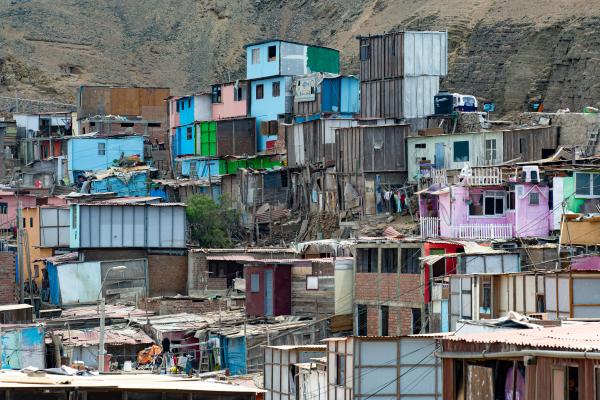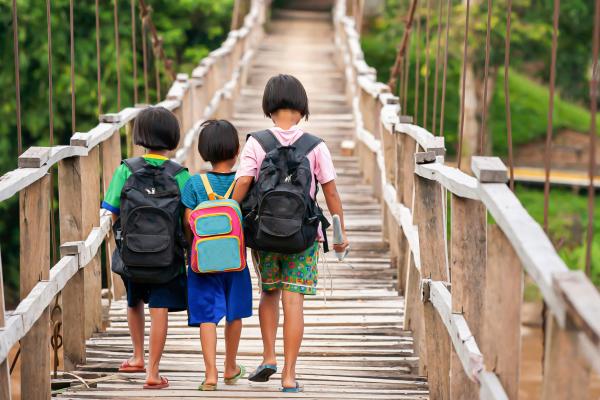About Lives in Dignity
The EU-UNOPS Lives in Dignity (LiD) Grant Facility was founded in 2020 to efficiently and effectively channel funding to promote development-oriented approaches to new, recurrent and protracted displacement crises, focusing on early operational engagement.
Context
In the past decade, the forced displacement crisis has increased in both scale and complexity. The number of people forcibly displaced has risen to 82.4 million in 2020 – more than 1% of the world’s population. An estimated 40% are children under the age of 18.
Most displaced people exist in a limbo that is economically insecure, psychologically traumatic, and devoid of a planning horizon. Host communities, 86% of whom are in developing countries, are themselves frequently overburdened, under-resourced and overwhelmed by the influx.
The protracted nature of forced displacement means current models of displacement management are largely ineffective. Stronger cooperation between development, humanitarian, and peace actors will result in more effective and lasting solutions for those affected by forced displacement, ensuring they do not become locked in a cycle of reliance and dependency.

Approach and expected impact
The LiD Grant Facility supports refugees and other displaced persons to become productive members of their host communities and participate in furthering their common resilience, socio-economic growth and development.
The strategic priorities for the Facility are:
- Early engagement of development-led approaches to forced displacement
- A needs-based rather than status-based approach, including all displacement-affected populations
- A coherent and complementary approach with strong synergies between all partners.
The Facility focuses on five thematic areas:
- economic livelihood development
- spatial planning, housing and settlement
- integrated service delivery (health, education, water and sanitation, energy)
- protection in development
- addressing disaster and climate-related human mobility
The LiD Grant Facility’s flexible structure ensures it is agile and responsive, reinforcing the humanitarian-development-peace nexus. It contributes to and aligns with existing global efforts, drawing on the expertise of numerous actors, which in turn informs the strategic direction and the overall work of the Facility.
Target countries and situations
Between 2021 to 2025, the LiD Grant Facility is allocating €24 million to a diverse group of implementing partners. The facility's geographic scope includes regions in Asia, Latin America and Sub-Saharan Africa.
The first call for proposals focused on the following displacement situations:
- Countries cooperating under the SSAR/Solutions Strategy for Afghan Refugees to Support Voluntary Repatriation, Sustainable Reintegration and Assistance to Host Countries (Afghanistan, Pakistan and Iran).
- Countries cooperating under the MIRPS/Regional Comprehensive Protection and Solutions Framework (Belize, Costa Rica, Guatemala, Honduras, El Salvador, Mexico and Panama).
- Sahel countries (Burkina Faso, Chad, Mali, Mauritania, Niger) and including Nigeria.
The second call for proposals focused on the following displacement situations:
- Countries affected by both the Myanmar forced displacement situation and disaster/climate related displacement (Myanmar, Bangladesh, Malaysia and Thailand).
- Horn of Africa — Countries highly relevant to the Sudan–South Sudan situation (South Sudan, Sudan and Uganda).
- Americas — Countries highly affected by the Venezuela displacement situation (Aruba and Curacao, Colombia, the Dominican Republic, Ecuador, and Peru).
Find out more about the projects funded in the 'Related projects' section below.
Operational structure
The LiD Grant Facility Project Steering Committee (PSC), made up of representatives from both the European Commission and UNOPS, is supported by a global Advisory Board (AB) made up of expert representatives from displacement and development-focused entities. A local advisory structure is being created to support the PSC, AB and the Facility’s implementing partners throughout implementation. A wider group of stakeholders are also regularly consulted as part of the establishment and implementation of the Facility’s work.
UNOPS is responsible for the management of the Grant Facility. The European Commission funds the project and is responsible for the strategic direction and funding allocation for the Grant Facility.
The Lives in Dignity Grant Facility Strategy
The Lives in Dignity Grant Facility strategy was built on the foundations of global policy frameworks and has been driven by an international and multidisciplinary consultative process. The flexible structure assures it is agile and responsive, reinforcing the humanitarian-development-peace nexus. The full strategy is available in English, French and Spanish.
Related documents
- 8 MARCH 2022
Related projects

The project seeks to rebuild education and employment opportunities for at-risk migrants and reduce the discrimination they face in Peru and in Ecuador.

The Southeast Education and Employment Opportunities project (SEE Opportunities) supports children, youth and the unemployed from displacement-affected communities to progress from basic education to skills training, then employment.

This project seeks to improve livelihoods, provide water, sanitation and hygiene, strengthen social cohesion and facilitate the disaster risk reduction response among the people in the Western Myanmar.
